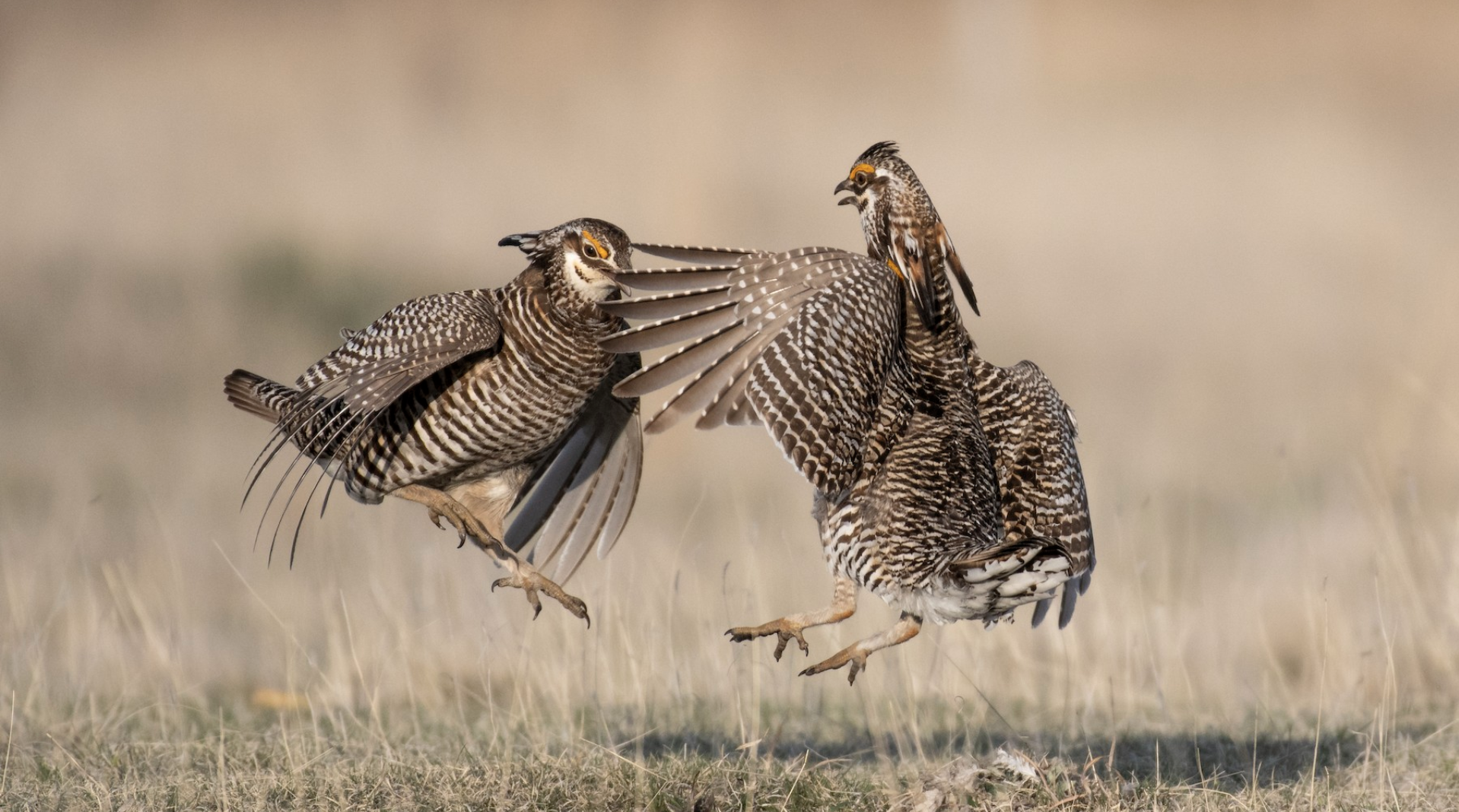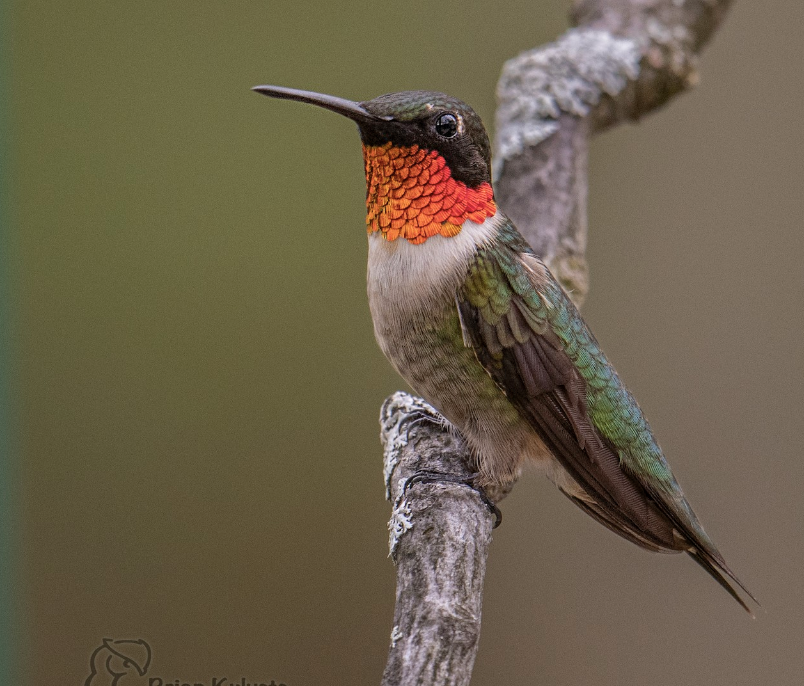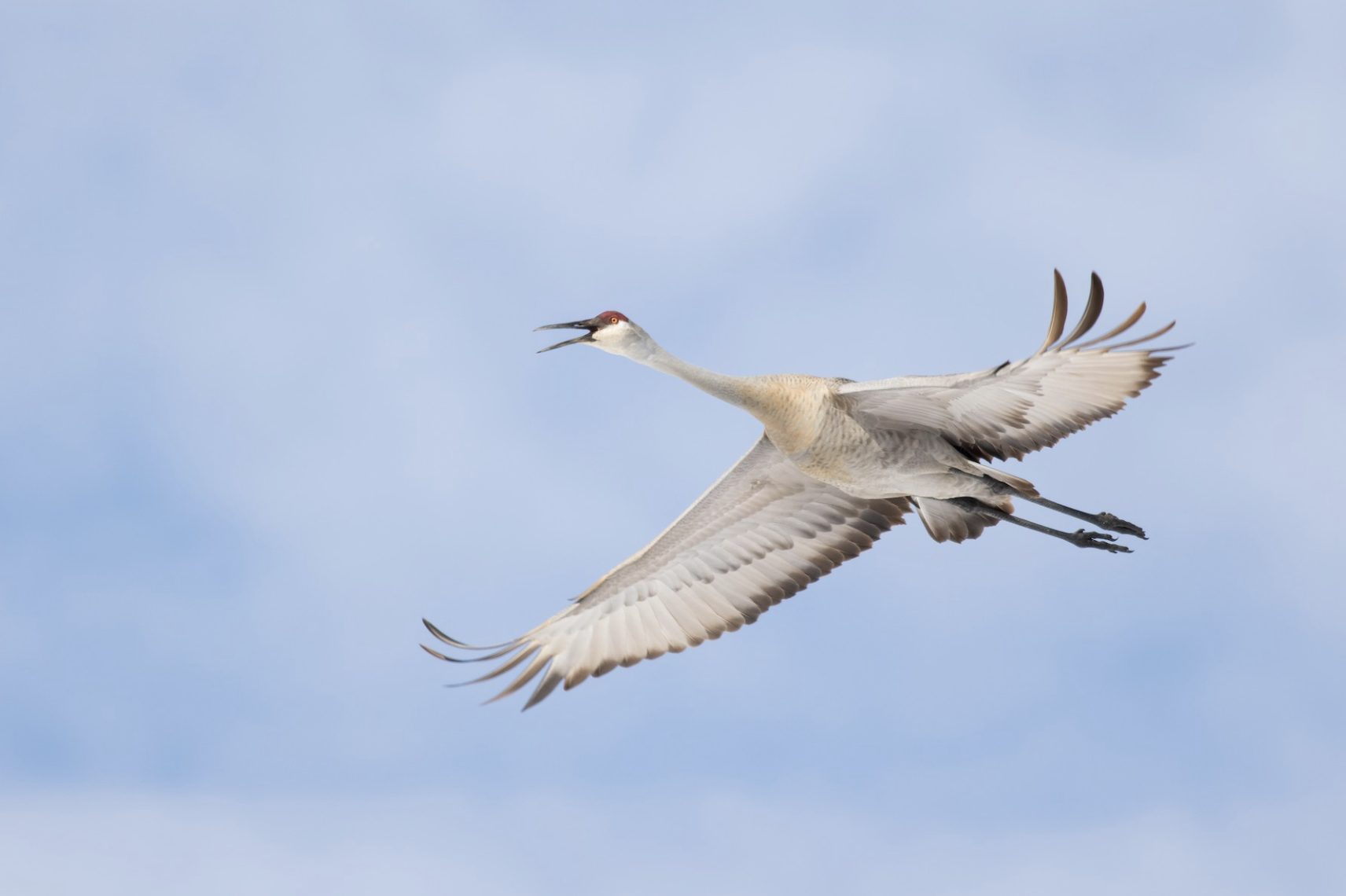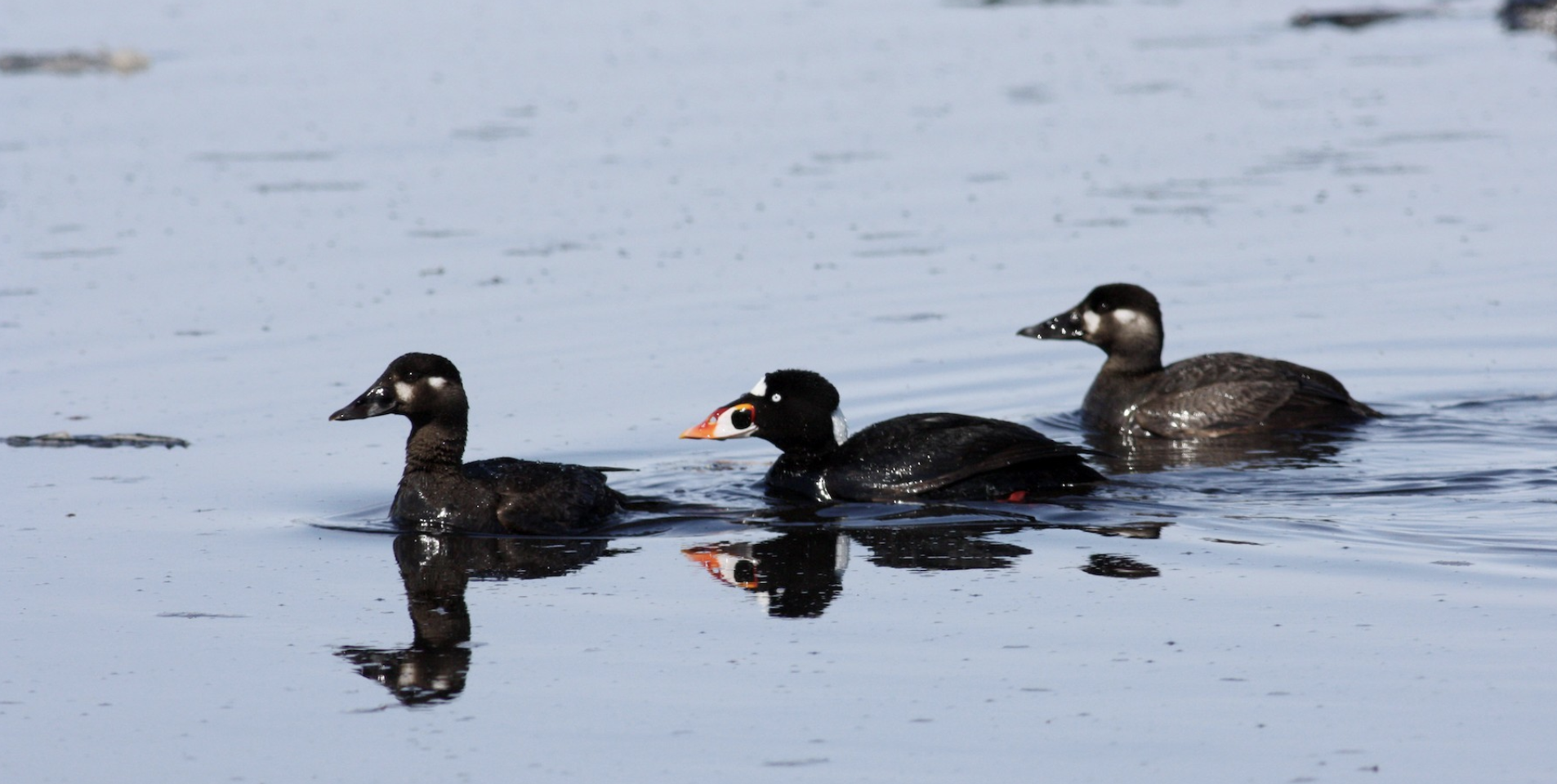
Bird Jail Program + Bird Glossary
Bird Glossary
-

American Bittern
Stocky, brown heron found in marshes and bogs. Usually secretive and difficult to see, but occasionally found in the open. Most similar to juvenile night-herons. Note striped neck, plain unspotted wings, and even more secretive behavior of bittern. Most active around dawn and dusk, when it might be seen flying low over extensive marshes. Listen for its incredible vocalization in the spring and summer: a resonant, booming noise produced by air sacs on the neck, “oonk-GA-loonk.” Also gives single low squawks.
-

American Woodcock
Plump, well-camouflaged shorebird that favors wooded or shrubby areas, usually near open fields. Plain buffy-salmon belly distinctive; also note intricately patterned upperparts with broad gray stripes down the back. Goofy-looking expression with huge dark eye placed high and far back on head. Extremely long bill used to probe the ground for worms. When flushed from dense cover, listen for high-pitched wing twittering and note rotund shape and long bill. Might be confused with Wilson’s Snipe, but woodcock is not nearly as dark and patterned. Fairly common throughout eastern North America, but secretive and rarely seen well in daytime. Always on the ground, except during well-known elaborate courtship display performed from dusk to dawn in spring. Listen for loud nasal “PEENT!” calls from the ground and high-pitched chirps and twitters (produced by the outer wing feathers) from high in the sky.
-

Blue Jay
Familiar but stunning jay found year-round throughout most of eastern North America. Bright blue above and pale gray below with a fluffy crest. Also look for black necklace and black and white markings on the wings and tail. Pairs or small groups travel through mature deciduous or coniferous woodlands, often revealing their presence with loud, harsh “jay” calls. Frequently visits bird feeders, where it is often aggressive towards other birds.
-

Brant
Small, short-legged coastal goose; distinctive black head and neck with small white necklace. Some variation in belly and flank coloration across subspecies. "Black Brant," mainly of western North America and eastern Asia, is darkest, with contrasting white flanks. Breeds on tundra in the high Arctic; winters in saltmarshes, rocky coastlines, sheltered bays, and beaches. Typically uncommon to rare inland. Almost always seen in flocks, only rarely mixing with other geese species.
-

Budgerigar
Iconic small green and yellow parrot found extensively across inland Australia. Largely nomadic, according to food and water availability. Usually found in small flocks zipping around overhead, but can congregate in staggering numbers under the right conditions. All native birds in Australia are green and yellow with a beautiful scalloped pattern on the upperparts and fine barring on the head. Small introduced populations and escaped birds scattered across the globe can include various other color forms such as blue and white.
-

Carolina Wren
Bold white eyebrow. Warm brown above, buffy-orange underparts. Slightly decurved bill. Tail is about as long as body and often cocked up. Usually in hiding in dense vegetation, tangled understory, or brush piles in forested areas. Nests in peculiar places around backyards, such as tucked in a drainpipe or grill. Occasionally feeds on suet or mealworms at feeding stations. Listen for loud, ringing song and variety of calls. Unlike House Wren they are not migratory and stay nearby their breeding grounds year-round.
-

Greater Prairie-Chicken
Plump, chickenlike bird found in grasslands. Body and wings entirely barred brown with paler buffy throat. In spring, males gather at display site and dance to attract females: look for them hunched over with earlike feathers protruding from the head and yellowish-orange skin exposed on the neck. Inconspicuous and difficult to find away from display sites. Separate from Lesser Prairie-Chicken by range; averages slightly darker and larger than Lesser. Darker than Sharp-tailed Grouse with more heavily barred sides and belly; rounded tail.
-

Harpy Eagle
Massive bird of prey, restricted to mature forest and always rare. Enormous talons. Adult is dark gray above, paler below, with obvious dark breast band. Note more obvious black-and-white barring on wings in flight to help separate it from Crested Eagle. Juvenile has whiter head than adult and no breast band; very similar to Crested Eagle but note longer crest with two points (separated in the middle). Feeds on monkeys and sloths. Usually seen perched in the canopy or flying across a road or river, does not soar.
-

Killdeer
Common, large plover. Slender shape with long wings and tail. Look for two black breast bands, unique among plovers in its range. Often nests near human development: parking lots, school roofs, road edges, and farms, usually on bare gravel. Adults perform broken-wing displays to distract predators from their nests and young. Gathers in larger numbers in migration and winter, often in fields with short grass or barren dirt. Occurs throughout North America; more local along the Pacific coast of northern South America. Can be very vocal; listen for loud namesake “kill-deer” call.
-

Red-Shouldered Hawk
Smaller than Red-tailed Hawk. Adults are beautiful with rich orange barring below and bold black-and-white checkerboard patterning on wings. Often in forested areas, where they hunt from perches. Perches on wires more frequently than Red-tailed Hawk. In flight, wings seem narrow and pushed forward compared to Red-tailed or Broad-winged Hawk; also note relatively long tail. Population in California is more richly colored (darker orange) than paler Eastern birds; while Florida birds are paler with gray head and back.
-

Ruby-Throated Hummingbird
Small hummingbird found in a variety of woodland and brushy habitats. Male distinctive with ruby-red throat and black chin. Female has whitish underparts with almost no buffy tones (perhaps a very light wash on flanks). Readily comes to sugar water feeders and flower gardens. Default summer hummingbird over most of eastern U.S. and Canada. Winters south to Panama. Very difficult to distinguish from Black-chinned Hummingbird, especially females and young males; thankfully limited range overlap. Ruby-throated averages somewhat brighter green above, shorter- and straighter-billed, and has slightly narrower outer wing feathers, but these differences are all extremely subtle.
-

Rock Pigeon
Fairly large pigeon with wild and feral populations throughout the world. True wild birds nest on cliffs and in caves from western Europe to central Asia. Pale gray overall with two bold black wingbars and iridescent purple and green on neck. Feral varieties are common in cities and farmland, often in large flocks. Variable plumage: some identical to wild-type birds, but can be completely black, white, or orangey-brown and any combination in between.
-

Sandhill Crane
Large, long-legged bird shaped much like a heron. Gray body, sometimes with intense rusty staining. Adults have red crown. Often in large flocks at migration and wintering concentration points. Favors marshes and agricultural fields where they eat primarily grains. In flight, neck is outstretched, unlike herons with tucked necks. Snappy wingbeats. Listen for far-carrying bugling call.
-

Shoebill
Utterly unique bird that makes up its own family. The plumage is uniformly gray in adults and brownish in immatures. Structure is stork-like overall, but with a thick neck and massive hooked bill. In flight, which is sometimes quite high, the long legs trail. Found in deep marshes, especially papyrus swamp. Usually alone or in pairs.
-

Surf Scoter
Large, dark sea duck. Breeding males have a colorful bill and white patches on the nape and forehead. Females and first-year males are dark brown with white patches on the cheek and face. Note large, thick-based bill to help separate from female White-winged Scoter. Breeds on lakes and ponds in northern Canada and Alaska; winters in flocks in harbors, bays, and other coastal waters, where dives for mussels and other aquatic invertebrates. Uncommon to rare inland, especially in migration. Frequently mixes with other sea duck species, especially eiders and scoters.
